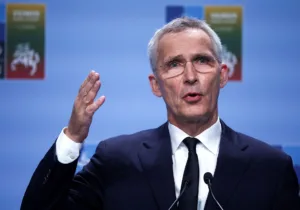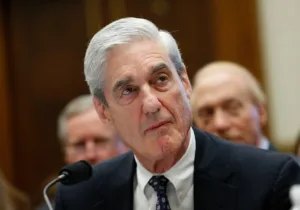On Thursday President Trump announced he would withdraw the United States from the Paris Agreement. Here is what you should know about this international climate change treaty.
What is the Paris Agreement?
The Paris Agreement is the latest addition to the 1994 international environmental treaty known as the United Nations Framework Convention on Climate Change (often referred to merely as the “Convention”). According to the U.N., the ultimate objective of the Convention is to stabilize greenhouse gas concentrations “at a level that would prevent dangerous anthropogenic (human induced) interference with the climate system.”
The Paris Agreement, which reached the threshold for ratification in 2016, builds upon the Convention by setting a more specific objective of “keeping a global temperature rise this century well below 2 degrees Celsius above pre-industrial levels and to pursue efforts to limit the temperature increase even further to 1.5 degrees Celsius.” The Agreement, however, relies on voluntary contributions by signatory countries.
Out of the 197 Parties to the original Convention, 147 have ratified the Paris Agreement.
What does the Paris Agreement require countries to do?
Like it’s precursor, the Kyoto Protocol, the Paris Agreement requires signatory parties to “put forward their best efforts” to affect climate change by regularly reporting to the U.N. how the nations plan to reduce their emissions and on how the implementation efforts are proceeding. Each nation does this by determining their own goal and reporting it as an Intended Nationally Determined Contributions (INDCs).
What was the goal (i.e., INDC) of the United States under the Paris Agreement?
The Obama administration issued an INDC that stated:
The United States intends to achieve an economy-wide target of reducing its greenhouse gas emissions by 26%-28% below its 2005 level in 2025 and to make best efforts to reduce its emissions by 28%.
This goal would reduce emissions lower than at any time since before 1990.
Why did President Trump remove the U.S. from the agreement?
In his speech on Thursday President Trump said, “The agreement is a massive redistribution of United States’ wealth to other countries. It’s to give their country an economic edge over the United States. That’s not going to happen as long as I’m president, I’m sorry.”
He claimed the agreement “punishes the United States” and is “very unfair at the highest level to the United States.” He also added that, “Our withdrawal from the agreement represents a reassertion of American workers’ sovereignty.”
President Trump said contributions to the United Nations’ Green Climate Fund were “costing the United States a fortune.” How much did it cost us?
The Obama administration pledged $3 billion to the fund and sent $1 billion.
What are the arguments for supporting the agreement?
Supporters of the treaty claim that by abdicating our leadership role on climate change efforts, the U.S. is making it easier for other countries to back out of their own commitments to reduce carbon emissions.
Another main argument made by critics of the president’s decision is that it undermines America’s diplomatic efforts in other areas of foreign interest and national security. As former Secretary of State George Shultz recently said about the agreement, “[g]lobal statecraft relies on trust, reputation and credibility, which can be all too easily squandered… [I]f America fails to honor a global agreement that it helped forge, the repercussions will undercut our diplomatic priorities across the globe.”
What are the arguments for opposing the agreement?
President Trump believes that efforts to reduce carbon emissions harm both the energy and manufacturing sectors of the American economy. Environmental Protection Agency Administrator Scott Pruitt also claims that the agreement complicated his efforts to roll back climate change regulations implemented during President Obama’s tenure.
Another argument is that the agreement doesn’t matter much anyway since it will not achieve its intended effect. Even supporters of the agreement admit it won’t reach its goal. An analysis by the Climate Action Tracker, a consortium of research institutions, concluded that the INDCs, if fully implemented, could result in warming of 2.7 degrees Celsius, which would only be 0.9 degrees lower than without them.
How does the U.S. withdraw from the agreement?
Because President Obama did not send the agreement to the Senate for ratification, (which would have required approval by two-thirds of the Senate), the agreement is non-binding on the United States. President Trump could send the agreement to the Senate. Once rejected, it would become null and void.
Another option available to the president is to withdraw the U.S. from the Convention. According to the Paris text, “Any party that withdraws from the convention shall be considered as also having withdrawn from this agreement.”
The path President Trump is likely to follow, though, is formal withdrawal from the agreement. Because that is such a lengthy process, it likely will not be completed until November 2020—the month he is be up for reelection.
—
Joe Carter is an adjunct professor of journalism at Patrick Henry College, an editor for several organizations, and the author of the NIV Lifehacks Bible.
Photo Credit: During the UN’s 2015 United Nations Climate Change Conference (COP21) on December 12, 2015, after the participating 195 countries agreed to the Paris Agreement. United Nations photo, via Flickr.







 Live in the DC area? Sign-up for Providence's in-person events list!
Live in the DC area? Sign-up for Providence's in-person events list!